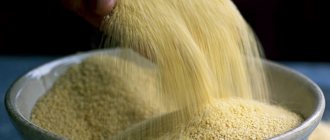Cabbage is harvested in the fall, stored and used for several months. In winter, sauerkraut will delight you with its crunch and vitamins if it is properly prepared and stored without loss of quality.
Pickles are stored in barrels, glass jars, which are placed in the basement, cellar or refrigerator. We will tell you in the article how long sauerkraut can be stored in the refrigerator, what conditions must be observed and what product should not be eaten.
Storing sauerkraut in the refrigerator
The shelf life of the products depends on several factors : ambient temperature and humidity, selected container, additional ingredients.
If you follow the storage conditions, the pickles will last for 6-8 months in the refrigerator .
In an open container, the product is stored in the refrigerator for no more than two months . But experienced housewives extend the shelf life using their secrets.
Selection of containers
The choice of container for fermentation is important ; the shelf life depends on it:
- Enameled pan or bucket . The inner surface is checked for chips to prevent metal oxidation. Store exclusively covered and under pressure for about 6 months.
- Glass jars . The easiest way to store them is in the refrigerator, always under an airtight lid, completely covered with brine. The shelf life will be about 4-6 months.
- Plastic containers . Storage in the refrigerator will be no more than 2-3 weeks. It is allowed to freeze in small portions and then immediately use the defrosted product for food.
Temperature
The main factor influencing shelf life is temperature . Sauerkraut is a product obtained by natural fermentation, which means that in the heat it can become acidic and become inedible.
Interesting things on the site:
The best sauerkraut recipes without salt and sugar
How to pickle cabbage for the winter using quartered heads of cabbage
If you maintain a temperature of +5...+8°C , then the workpiece retains its beneficial properties for 2-3 weeks.
Experienced housewives advise storing the salted vegetable at a temperature from 0 to +4°C , then you can enjoy the crispy taste of cabbage for up to 8 months.
Humidity
Do not allow dry air in the place where the workpiece is stored . Optimal humidity is 85-95%.
Brine quantity
Proper preparation significantly affects shelf life. It is important to ensure that the brine covers the layer of cabbage . If the chopped vegetable is exposed in the container, then salt is dissolved in cooled boiled water and added to the top of the workpiece. And to prevent this from happening, they put pressure on sauerkraut.
Attention! If the top layer has darkened, it means that the pickle has become unfit for consumption.
Use of preservatives
Extend the shelf life of the product using preservatives . Suitable for this:
- Granulated sugar . It is sprinkled on top of the cabbage from time to time.
- Acetic acid . Add just a little bit so as not to spoil the natural taste of the fermented vegetable.
- Vegetable oil . Oil is poured over the top of the workpiece so that it forms a thin film. It will not allow oxygen to pass through and will stop the fermentation process.
- Salt . Sometimes cabbage is specially salted so that it can be stored longer. But such a product is not suitable for use in salads.
- Cranberry . Benzoic acid contained in berries inhibits the development of bacteria and gives a special taste and aroma to the product.
Can it be frozen?
Sauerkraut is often frozen. At the same time, its shelf life increases significantly. In this state, she is able to “hold out” for more than eight months.
The defrosted product is somewhat inferior in taste, but retains most of its beneficial properties . After thawing, the product must be stored according to standard rules (at low positive temperatures).
The vegetable cannot be re-frozen, since in this case not only a large amount of biologically active substances is lost, but also the organoleptic properties noticeably deteriorate.
How to tell if cabbage has gone bad
A spoiled product can be seen by several signs:
- Smell . If you smell an unpleasant smell of a rotten product.
- An intense fermentation process began at the top of the container in the form of bubbles, foam or even mold. All this indicates a violation of the ripening process.
- Brine turbidity . When cabbage is salted, liquid is released. Ideally, the brine has a transparent color throughout storage. If it begins to become cloudy, it means the product has begun to deteriorate.
You can try a suspicious pickling by taking a small amount. Although cabbage is called “sour”, the taste of a spoiled vegetable is easy to determine.
The benefits of this workpiece
Cabbage itself is an incredibly healthy vegetable.
It contains a lot of calcium, zinc, magnesium, iron, potassium and phosphorus. In addition to all this, it is rich in various amino acids, which are very important for the human body. What's so special about this salad? Interesting: Storing Pumpkins for the Winter in the Freezer
First of all, it replenishes vitamin deficiencies in winter, which improves immunity. Among other things, the vegetable prepared in this way contains the following vitamins:
- U – has a beneficial effect on the stomach and intestines, preventing the formation of ulcers;
- C – responsible for immunity;
- B – accelerates metabolic processes.
Other storage options
Often in the fall the refrigerator cannot accommodate all the supplies. Then the jars, buckets and pans are sent to cellars, basements, etc.
Storage in a cellar or basement
The cellar allows you to store preserved food in barrels . Oak barrels preserve the taste of the product, and suitable conditions of temperature and air humidity will preserve the preparations for as long as possible - up to 8 months.
Balcony
Recently, plastic windows have often been installed on balconies, insulated and maintained at a comfortable temperature in winter. On such balconies, cabbage is stored in jars or enamel containers.
If the balcony is cold, then the container with salted vegetables is frozen . When necessary, the top layer is loosened, the required amount of product is collected, and warmed at room temperature. The rest is left frozen.
What is the shelf life of the product?
After pickling, the vegetable can be stored in a room where a low positive temperature is maintained.
Suitable for this purpose:
- fridge;
- cellar;
- cold storage room;
- open or glazed balcony.
In some cases, jars of sauerkraut are kept directly in the kitchen or room.
At temperatures from -1 to +4 degrees, cruciferous vegetables can be stored in a closed container for up to eight months. When stored without refrigeration and the temperature rises to +10 degrees, the shelf life is reduced to 5-6 days.
Choosing a container
In order for the workpiece to be stored for a long time, it is not enough to maintain the correct temperature . It is also important to choose the right container.
Plastic containers
Proper plastic containers must meet safety standards and be intended for storing and freezing food products.
Melamine containers are not suitable for storing workpieces - they are usually not marked and are very toxic. PP, or PP, marking is applied to the safest plastic. It is used to make bottles for feeding children and containers for storing food.
PS, or PS, is also suitable for containers, but such containers should not be heated.
Containers with markings are completely suitable for storing workpieces:
- PET, PETE, or PET;
- HDPE, or HDPE;
- OTHER, or Other.
It is strictly forbidden to use containers marked V or PVC or PVC . This is technical toxic plastic. You should not freeze the product in boxes marked LDPE, or MDV.
Useful tips
Let's look at some useful tips for storing sauerkraut, allowing you to maintain the quality of the product at a high level and maximize its shelf life:
- Since the main value of sauerkraut is the content of large amounts of vitamin C, as well as coarse fibers that ensure normal digestion and metabolic processes in the body, it is necessary to take precautions so that the beneficial substances are not destroyed during storage. To do this, the workpieces must be covered with brine, and the product is removed from the liquid only before serving. If the liquid does not cover all the cabbage, it is recommended to use a press that will press down the main product, in which case the brine will cover it completely.
- Regular sugar will help prevent the product from becoming acidic; it is added as a preservative, which stops the fermentation processes that occur in an acidic environment. Sugar is poured directly onto the top layer of cabbage. Table vinegar can be used for the same purposes, but it should be added directly to the brine, thoroughly mixing the contents of the container. The vinegar additive may slightly change the taste of the product, so it should be added carefully and in minimal doses.
- A good preservative is vegetable oil, which is poured onto the surface of the brine. It allows you to block the access of oxygen to the main product and protects against the effects of pathogenic microorganisms that provoke rapid rotting and spoilage of food.
- If the workpiece is slightly acidic, it can be used to prepare dishes undergoing heat treatment; in this case, the cabbage should be thoroughly washed and sprinkled with 1 tsp. Sahara.
- To protect the workpieces from mold fungi, add mustard powder or mustard seeds bound in a gauze bag to the container. Such products have an antiseptic effect and prevent the development of harmful microorganisms.
- You can extend the shelf life of cabbage by adding cranberries to the container, which are a natural preservative and prevent rapid deterioration of the preparation.
- Horseradish is a good product for protecting products from rapid spoilage, which prevents the development of bacteria and fungi, and also adds a piquant taste and aroma to pickles. It is added to the finished product after ripening, so as not to interrupt the fermentation processes.
Thus, the duration of storage of sauerkraut directly depends on the container, place and conditions that were organized. To ensure that the product is suitable for use for as long as possible, it is recommended to pay attention to the information in the article.










